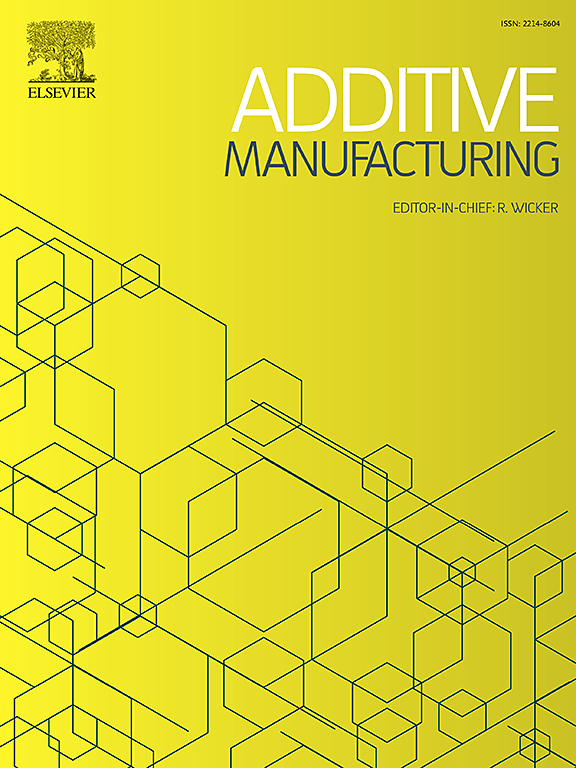A mechanistic study on environment gas in laser powder bed fusion
IF 11.1
1区 工程技术
Q1 ENGINEERING, MANUFACTURING
引用次数: 0
Abstract
A variety of protective or reactive environmental gases have recently gained growing attention in laser-based metal additive manufacturing (AM) technologies due to their unique thermophysical properties and the potential improvements they can bring to the build processes. However, much remains unclear regarding the effects of different gas environments on critical phenomena in laser AM, such as rapid cooling, energy coupling, and defect generation. Through simultaneous high-speed synchrotron x-ray imaging and thermal imaging, we identify distinct effects of two environmental gases in laser AM and gained a deeper understanding of the underlying mechanisms. Compared to the commonly used protective gas, argon, it is found that helium has a negligible effect on cooling the part. However, helium can suppress unstable keyholes by decreasing effective energy absorption, thus mitigating keyhole porosity generation and reducing pore size under certain processing conditions. These observations provide guidelines for the strategic use of environmental gases in laser AM to produce parts with improved quality.
激光粉末床熔合中环境气体的机理研究
各种保护性或反应性环境气体最近在基于激光的金属增材制造(AM)技术中受到越来越多的关注,因为它们具有独特的热物理性质,并且可以为构建过程带来潜在的改进。然而,关于不同气体环境对激光增材制造中关键现象的影响,如快速冷却、能量耦合和缺陷产生,仍然不清楚。通过同时进行高速同步x射线成像和热成像,我们确定了两种环境气体对激光AM的不同影响,并对其潜在机制有了更深的了解。与常用的保护气体氩气相比,我们发现氦气对冷却零件的作用可以忽略不计。而在一定的工艺条件下,氦气可以通过降低有效能量吸收来抑制不稳定的锁孔,从而减轻锁孔孔隙的产生,减小孔径。这些观察结果为在激光增材制造中战略性地使用环境气体来生产质量更高的零件提供了指导。
本文章由计算机程序翻译,如有差异,请以英文原文为准。
求助全文
约1分钟内获得全文
求助全文
来源期刊

Additive manufacturing
Materials Science-General Materials Science
CiteScore
19.80
自引率
12.70%
发文量
648
审稿时长
35 days
期刊介绍:
Additive Manufacturing stands as a peer-reviewed journal dedicated to delivering high-quality research papers and reviews in the field of additive manufacturing, serving both academia and industry leaders. The journal's objective is to recognize the innovative essence of additive manufacturing and its diverse applications, providing a comprehensive overview of current developments and future prospects.
The transformative potential of additive manufacturing technologies in product design and manufacturing is poised to disrupt traditional approaches. In response to this paradigm shift, a distinctive and comprehensive publication outlet was essential. Additive Manufacturing fulfills this need, offering a platform for engineers, materials scientists, and practitioners across academia and various industries to document and share innovations in these evolving technologies.
 求助内容:
求助内容: 应助结果提醒方式:
应助结果提醒方式:


